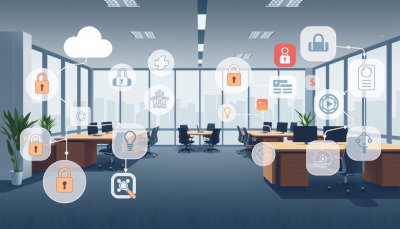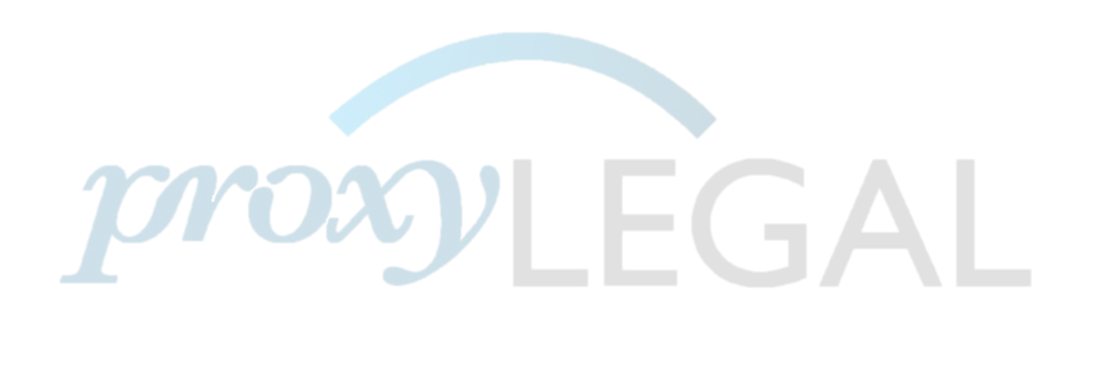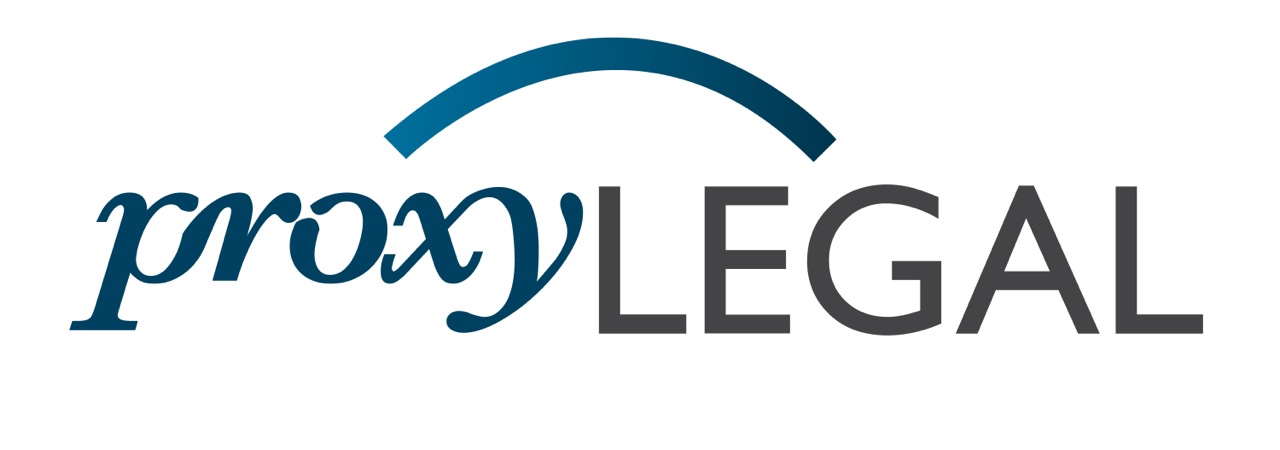
More businesses and people are using Software as a Service (SaaS) for ease and growth. It’s key to know the important legal parts of SaaS deals. Learning about these legal terms helps keep our interests safe and makes sure we make smart choices.
Whether we offer SaaS services or use them, it’s vital to grasp the different parts of these contracts. This knowledge is essential for dealing with the digital world’s complexities.

Key Takeaways
- Key clauses in SaaS agreements protect both service providers and users.
- SaaS agreement templates help streamline the process of creating contracts.
- Understanding SaaS legal terms is crucial for secure and compliant business operations.
- Essential clauses include service-level agreements, data security requirements, and subscription terms.
- Privacy policies and intellectual property rights are also vital components of SaaS agreements.
Introduction to SaaS Agreements
Software as a Service (SaaS) lets users access applications online without installing them. This model makes software use flexible and scalable. A good SaaS agreement is key to a smooth, legal relationship between the provider and the user. It outlines the terms, rights, and duties of both sides.
Understanding SaaS
SaaS is a popular model in today’s digital world. Companies like Salesforce and Google Workspace show its value. Users can access software online without needing a lot of IT setup.
By using SaaS Agreement Guidelines, businesses can understand their duties and avoid problems.
The Importance of a SaaS Agreement
A strong SaaS agreement is vital. It covers the service’s scope, data handling, and usage rights. Including Essential SaaS Clause Examples makes sure important details like availability and data protection are clear. This protects the provider and reassures clients about the software’s reliability and security.
These agreements also help businesses run smoothly. They define service levels, payment terms, and how to solve disputes. Following SaaS Agreement Guidelines helps both sides avoid misunderstandings and builds a lasting partnership.
Service Level Agreement (SLA) Clauses
The Service Level Agreement (SLA) is key in SaaS Contract Provisions. It outlines what the service provider and customer expect from each other. Without clear SLA Performance Metrics, service quality and reliability can suffer. It’s vital to set clear, measurable standards to keep both sides on track.
Performance Metrics and Standards
Performance metrics are vital in SaaS Contract Provisions. They ensure the service meets set standards. This includes things like how fast the system responds and how quickly transactions are processed.
Having precise SLA Performance Metrics helps keep the service running smoothly. It allows for ongoing checks and improvements, making sure the service stays reliable and effective.
Uptime Guarantees
Uptime guarantees are another key part of SLA clauses. Businesses depend on SaaS solutions, and any downtime can hurt their work. So, it’s important to set an uptime percentage (like 99.9%) in the contract.
This promise includes what happens if the uptime drops below what’s agreed. It gives customers peace of mind about service availability.
Response Times
Response times are also crucial in SLA Performance Metrics. It’s not just about how well the service works. It’s also about how quickly problems are fixed.
Clear response times in the contract mean customers’ problems get solved fast. This boosts overall satisfaction with the service.
| Clause | Description |
|---|---|
| Performance Metrics | Include specific benchmarks such as response times and transaction speeds. |
| Uptime Guarantees | Specify the expected percentage of service availability, often 99.9%. |
| Response Times | Define the maximum timeframe within which service issues will be addressed. |
Data Security Requirements
Keeping client data safe is key in SaaS agreements. We’ll look at what’s needed to protect this information. These steps are vital for trust and following the rules.
Data Protection Measures
Protecting data requires both tech and organizational steps. This means using strong encryption, doing security checks often, and controlling who can access data. These actions show a provider’s commitment to keeping data safe.
Compliance with Regulations
Following laws like GDPR, HIPAA, and CCPA is a must in SaaS deals. This makes sure data handling is legal. It also builds trust between providers and clients.
Breach Notification
If a security breach happens, it’s important to tell clients quickly and clearly. Having clear rules for when and how to inform clients is crucial. It shows the value of keeping data safe.
| Security Aspect | Details |
|---|---|
| Encryption Techniques | Advanced encryption standards to protect data in transit and at rest. |
| Regular Audits | Periodic checks to identify and rectify vulnerabilities. |
| Access Controls | Strict policies on who can access different levels of data. |
| Compliance Standards | Adherence to GDPR, HIPAA, CCPA, and other relevant regulations. |
| Breach Notification | Protocols for timely and transparent communication during breaches. |
Subscription Terms and Pricing
It’s important for businesses to know about SaaS Subscription Terms and Pricing Models. The way billing is set up affects budgeting and cost predictability. These are key for planning ahead. Let’s look at the common models in SaaS agreements to understand what’s involved.
Per-User Pricing: This model charges for each user. It’s great for businesses that need to manage user access. It’s flexible and efficient because you can add or remove users as needed.
Tiered Pricing: This model has different service packages at different prices. Each tier adds more features or higher usage limits. It’s good for businesses that start small but plan to grow.
Usage-Based Pricing: This model charges based on what you use. It’s perfect for businesses with changing needs. Your monthly bill will match your usage, helping you save money.
Now, let’s compare these pricing models:
| Pricing Model | Description | Best For |
|---|---|---|
| Per-User | Charges a fee for each individual user | Businesses needing individual access |
| Tiered | Offers service packages at different price levels | Scalable businesses with evolving needs |
| Usage-Based | Pay based on the amount used | Businesses with varying workloads |
Knowing about SaaS Subscription Terms and Pricing Models helps us make better choices. It ensures we get the right deal for our business, with clear and predictable costs.
Privacy and Data Usage Policies
It’s important to know about privacy and data usage in SaaS agreements. This knowledge helps keep your personal info safe and private.
Customer Data Ownership
Who owns your data in SaaS is a big question. Most SaaS Privacy Policies say you own your data. But, it’s key to check the fine print in your contract.
Agreements usually say you own the data, but the service provider might need some access. This is to keep the service running smoothly.
Data Sharing Policies
Data sharing policies explain when and how your data can be shared. These rules are in the SaaS Privacy Policy. They make sure data sharing is strict.
The service provider might share your data with third parties. This could be for technical support or to follow the law. It’s up to us to know these rules to protect our data.
| Aspect | SaaS Provider | Customer |
|---|---|---|
| Ownership Rights | Access data for service maintenance | Retains full ownership |
| Data Sharing Permissions | Limited to technical support and legal compliance | Can set further restrictions |
Intellectual Property Rights
When we talk about software as a service (SaaS) agreements, knowing about SaaS Intellectual Property is key. It’s important to understand who owns the software and how it can be used. This clarity is crucial for both the service providers and the users.
Software Ownership
In a SaaS agreement, the software usually belongs to the provider. This rule protects the provider’s unique technology and ideas. For users, knowing this helps them understand the difference between the service they pay for and the software itself.
Usage Rights
Software Usage Rights tell users how they can use the SaaS platform. These rules are important to stop misuse and make sure both sides agree on what’s allowed. Having clear usage rights helps avoid legal problems and keeps the relationship open and honest.
Here’s a look at how software ownership and usage rights compare in SaaS agreements:
| Aspect | Software Ownership | Usage Rights |
|---|---|---|
| Definition | Ownership of the software remains with the provider. | Defines what actions users can perform with the software. |
| Purpose | Protects intellectual property of the provider. | Ensures users understand their limits in using the service. |
| Legal Implications | Prevents unauthorized redistribution or replication. | Helps in avoiding misuse and potential lawsuits. |
Grasping these core parts of SaaS Intellectual Property in your agreements can prevent big legal and operational issues later. By clearly defining software ownership and usage rights, everyone can work together smoothly and effectively.
Termination Clauses and Consequences
It’s key to know the details of SaaS Agreement Termination for both sides. Termination clauses outline when either party can stop the agreement. This makes ending services smooth.
Let’s look at why termination happens. Providers might stop services if payments keep failing. Customers might end it if the service quality is always bad. These reasons are clearly stated in SaaS contracts.
Then, we talk about what happens after termination. It’s important to agree on how to handle payments, data, and help during the transition. This avoids any disagreements.
Also, we must think about what happens to data after termination. Most agreements say how long data is kept for customers to get it back. After that, the provider deletes it to keep things private and follow the law. This makes sure everyone knows their role in data handling.
Here’s a quick summary of what happens when a SaaS Agreement is terminated:
| Aspect | Description |
|---|---|
| Outstanding Payments | All dues must be cleared before the termination is executed. |
| Data Retention | The provider retains customer data for a specified period for retrieval. |
| Transition Assistance | Optional service to aid customers in shifting to another platform smoothly. |
Clear termination clauses help both sides know their roles. This makes the contract termination process smoother. By understanding these points, we can avoid fights and ensure a fair transition for everyone.
Limitation of Liability
Understanding Limitation Clauses in SaaS agreements is key to managing risks. These clauses set limits on each party’s liability. They make sure both sides know what they can and can’t be held responsible for.
Scope of Liability
The scope of liability defines who is responsible for problems in the SaaS agreement. It’s important to clearly state what damages or losses are covered. Usually, these clauses don’t cover indirect, incidental, or consequential damages.
This helps protect against big claims.
Cap on Damages
A key part of Limitation Clauses is the cap on damages. This limits how much one party can ask for from the other. Caps are often based on the fees paid under the agreement.
This balance makes sure both sides can handle potential losses. It keeps things predictable and fair.
Indemnification Provisions
In the world of SaaS agreements, indemnification provisions are key. They protect parties from legal actions due to certain contract circumstances. SaaS Indemnification Clauses are vital for ensuring one party can get compensation for losses or damages. These clauses are what make a contract secure or not.
It’s crucial to clearly define the scope of indemnity when outlining terms. This ensures both parties understand their potential liabilities and protection. The main parts of contractual indemnification include:
- Specific scenarios requiring indemnification
- The extent of financial compensation available
- Any exclusions or limitations to the indemnity provided
Well-written SaaS Indemnification Clauses act as a safety net. They protect parties from unexpected legal issues and build trust. These clauses are not just legal terms; they are practical tools to reduce risks and strengthen the agreement. It’s important to understand and negotiate these provisions for anyone involved in a SaaS contract.
Addressing indemnification thoroughly can prevent disputes and outline actions if a covered event happens. With solid contractual indemnification provisions, both parties can work with confidence. They know there are steps to handle legal challenges efficiently.
Dispute Resolution Mechanisms
When dealing with Software as a Service (SaaS) agreements, it’s essential to have a clear framework for resolving disputes. Two primary methods are often employed: mediation and arbitration.
Mediation vs. Arbitration
Dispute Resolution in SaaS can be complex. Having predefined mechanisms like mediation and arbitration can offer clarity and efficiency. Mediation involves an impartial mediator helping both parties arrive at a mutually agreeable solution. It’s a non-binding process aimed at fostering cooperation and understanding.
On the other hand, arbitration is a more formal approach. An arbitrator hears both sides and makes a binding decision. Many SaaS agreements include SaaS Arbitration Clauses to ensure that any disputes are handled efficiently and with finality, avoiding prolonged litigation processes.
Jurisdiction and Governing Law
The jurisdiction and governing law sections of a SaaS contract are crucial. They define the legal context in which disputes will be resolved. It’s important for both parties to agree on a jurisdiction that is mutually acceptable. Typically, companies may prefer jurisdictions that are known for their fair handling of SaaS-related issues.
Governing law determines which legal principles will be applied in resolving the dispute. For instance, a contract may stipulate that the laws of California govern the agreement. This ensures that any disputes are settled under California’s legal framework. Choosing an appropriate jurisdiction and governing law can mitigate potential conflicts and make the process of Dispute Resolution in SaaS smoother.
| Aspect | Mediation | Arbitration |
|---|---|---|
| Process | Non-binding, cooperative | Binding, formal |
| Outcome | Mutual agreement | Arbitrator’s decision |
| Cost | Generally lower | Can be higher |
| Timeframe | Often faster | Depends on the complexity of the case |
Understanding these Dispute Resolution in SaaS mechanisms and the role of SaaS Arbitration Clauses helps in crafting SaaS agreements that are not only fair but also efficient in handling conflicts. It’s a step towards ensuring that both parties can rely on a structured way of resolving any issues that may arise during the course of their business relationship.
Conclusion
Understanding and carefully negotiating SaaS agreements is crucial for both providers and users. Each part of the agreement, like Service Level Agreements (SLAs) and data security, is very important. These terms help build a reliable and trustworthy service relationship.
Subscription terms, pricing, privacy policies, and data usage are key to how SaaS providers work. Intellectual property rights and how to end agreements are also critical. Knowing these helps us deal with the challenges of SaaS and sets us up for success.
The details of liability, indemnification, and how to solve disputes are also vital. These parts show why we need to fully understand and be proactive in making SaaS agreements. Following best practices in SaaS agreements protects our interests and helps create a strong, open, and stable digital world.
FAQ
What are essential *key clauses in SaaS agreements*?
Key clauses in SaaS agreements cover several important areas. They include Service Level Agreement (SLA) clauses and data security requirements. Also, subscription terms and pricing, privacy and data usage policies, and intellectual property rights are included.
Termination clauses and consequences, limitation of liability, indemnification provisions, and dispute resolution mechanisms are also crucial.
Why do I need to understand SaaS legal terms?
Knowing SaaS legal terms is key to protecting your interests. It helps define the rights and responsibilities of both parties. This knowledge prepares you for negotiating contracts and managing service expectations.
What is the importance of data security requirements in a SaaS agreement?
Data security requirements are essential in SaaS agreements. They outline how to protect sensitive data. This ensures compliance with laws like GDPR or HIPAA and defines breach notification protocols.
This protects both the service provider and the customer.
Can you explain the significance of SLA performance metrics in SaaS contracts?
SLA performance metrics are vital. They set clear expectations for service quality. Metrics like performance standards, uptime guarantees, and response times ensure reliability and responsiveness.
This builds trust and ensures accountability between the service provider and the customer.
What do SaaS subscription terms typically include?
SaaS subscription terms outline the billing framework. This can be per-user, tiered, or usage-based pricing. They also define the payment schedule and renewal conditions.
These terms provide transparency and predictability for both parties.
How do SaaS agreements address customer data ownership?
SaaS agreements address customer data ownership with specific clauses. They ensure the customer retains ownership of their data. The provider’s responsibilities and limits in accessing, storing, and using the data are outlined.
This maintains transparency and trust regarding data handling practices.
What are the standard provisions for terminating a SaaS agreement?
Termination provisions in SaaS agreements define when the contract can be ended. They outline the consequences of termination, such as data retention policies and settlement of outstanding payments.
They also provide transition assistance to minimize disruption.
Why are indemnification clauses important in SaaS contracts?
Indemnification clauses are vital. They protect one party from losses or damages caused by the other party’s breach of contract or negligence. These provisions require one party to compensate the other, reducing financial loss and legal disputes.
How is dispute resolution typically handled in SaaS agreements?
Dispute resolution mechanisms in SaaS agreements often include mediation and arbitration clauses. They specify how conflicts will be resolved outside of courts. These agreements also define the jurisdiction and governing law for resolving disputes.

